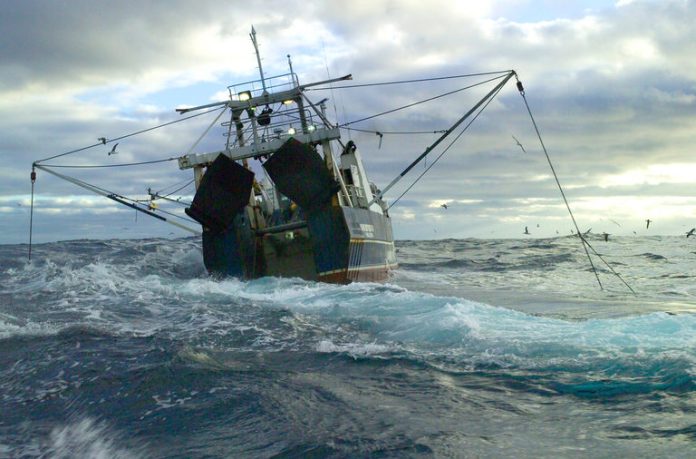Following orders from the new Government, New Zealand successfully blocked consensus on a measure to restrict bottom trawling in the South Pacific at an international forum that ended at the weekend.
The annual meeting of the South Pacific Regional Fisheries Management Organisation wrapped up on Friday in Ecuador (Saturday NZT) with no agreement being reached on a proposal New Zealand originally put forward to restrict seamount trawling to just 30 percent of seamount areas in the South Pacific.
New Zealand put the proposal forward at last year’s meeting in response to a plan to introduce a complete ban on trawling vulnerable marine ecosystems in South Pacific international waters.
It didn’t hand in the paperwork to the committee’s head office in Wellington late last year, with Australia putting the proposal forward instead.
Speaking to Newsroom last week, Fisheries Minister Shane Jones, a self-described industry apostle, said the new government was taking stock of the long-term implications of shrinking available fishing areas.
“This time around as the Fisheries Minister I’m keen to ensure that number one, we’re looking after our own people, looking after jobs and opportunities for economic development to benefit New Zealand.
“I don’t want that written out of the script as we go forward and move to finding common ground with other jurisdictions and nations.”
He said other governments had “naturally inclined” towards the environment and weren’t as robust as he is on the business and economic side of things.
Deep Sea Conservation Coalition’s Duncan Currie, who headed its delegation to the meeting as the only non-government observer, said New Zealand blocking consensus being reached had “really annoyed” the United States, Australia, Chile and the European Union.
He said the decision was made in favour of the commercial fishing industry which he says were deeply unhappy with the 70 percent agreement reached last year.
“That’s really no secret, but the way New Zealand put it was that the new government hadn’t had time to get its head around it.”
In response to New Zealand blocking the bottom trawling measure, the other nations blocked another proposal put forward by New Zealand to allow uncaught catch allocation on the Louisville Seamount Chain to be carried over to catch three years’ worth of fish at once.
Currie said the other nations believed that proposal was intrinsically linked to the bottom trawling restrictions which New Zealand was no longer coming to the party on.
With Orange Roughy the sole species of commercial interest, only New Zealand businesses, namely Westfleet, Sanford and Talleys, bottom trawl in the South Pacific area and very little fishing has been done in the past two years.
Currie said the value of what was being caught currently was very small and it was unclear if it was even economically viable anymore, particularly without the catch carryover measure New Zealand had proposed.
“That New Zealand has gone to these extreme lengths to annoy its major partners to prop up an ailing or dying industry is very short-sighted.
“It seems to set the tone for this current Government wanting to push economic interests at the expense of multilateralism and that’s not something we want to see in this day and age.”
Going forward, Currie said other South Pacific Regional Fisheries Management Organisation members would be alert to New Zealand trying to “unstitch” science.
The next committee meeting is in Peru towards the end of the year, meaning the status quo for bottom trawling in the South Pacific stands for now.
WWF-New Zealand chief executive Kayla Kingdon-Bebb said that after decades of upholding the rules-based order, New Zealand was burning bridges with the international community.
“Bottom trawling is an indiscriminate, destructive fishing practice – and its social licence is on the brink, both in New Zealand and globally. Fishing industry leaders are aware of this,” Kingdon-Bebb said.
“A handful of fishing industry players have made significant donations to NZ First – this is well documented. Ironically, the Minister of Ocean and Fisheries is not helping the industry by positioning New Zealand as a global outlier on bottom-trawling. Consumers are increasingly demanding better.”
New Zealand First received a $50,000 (US$30,266) loan from Sir Peter Vela, founder of one of the country’s largest commercial fishing operators, before the election.
In previous election cycles, Jones had received candidate donations from industry giant Talleys, Peter Talley himself, as well as Greymouth-based deep sea fishing firm Westfleet (half owned by Sealord).
Candidate donations for the 2023 election have not yet been released.
That close relationship with industry was enough for the 2017 Labour-led coalition to block Jones or other NZ First MPs from taking the fisheries portfolio in government, though Prime Minister Christopher Luxon has expressed confidence in Jones’ ability to carry out his ministerial duties.
Jones said no one would die doubting the importance he puts on economic development, but allegations that his former involvement with the fisheries industry made him unfit for the position of Fisheries Minister were “arrant nonsense”.
“Any suggestions that electoral donations associated with the fishing industry mean that we are we are not following proper governmental processes are not only grossly inaccurate, but New Zealand First is not going to tolerate a steady flow of bile.”
He said following its hassle with the Serious Fraud Office, in which the New Zealand First Foundation was cleared of wrongdoing, any donations received by New Zealand First would be handled to the “nth degree of the law.”
“Any suggestions to the contrary means people are stepping on treacherous ground and there will be consequences for those allegations,” he said.
SOURCE: NEWSWROOMS/PACNEWS














